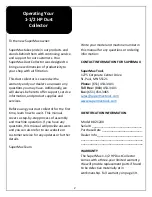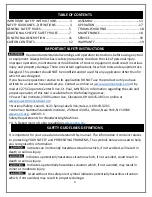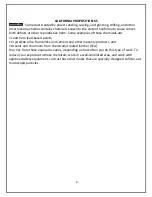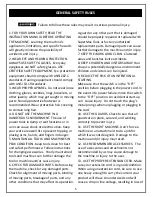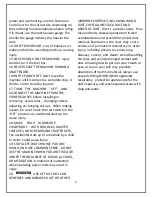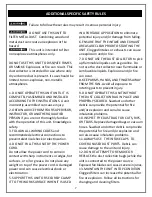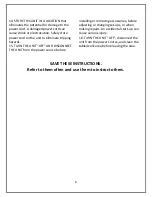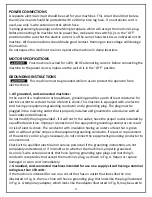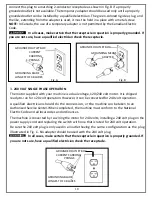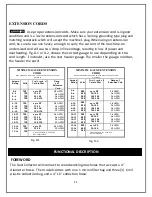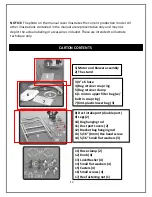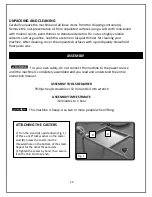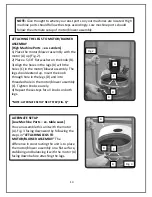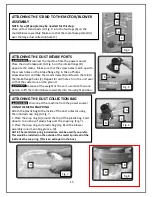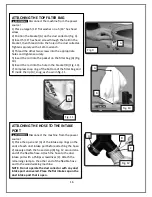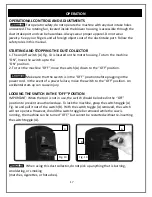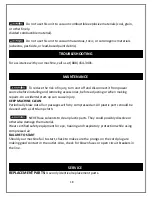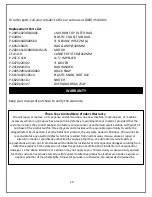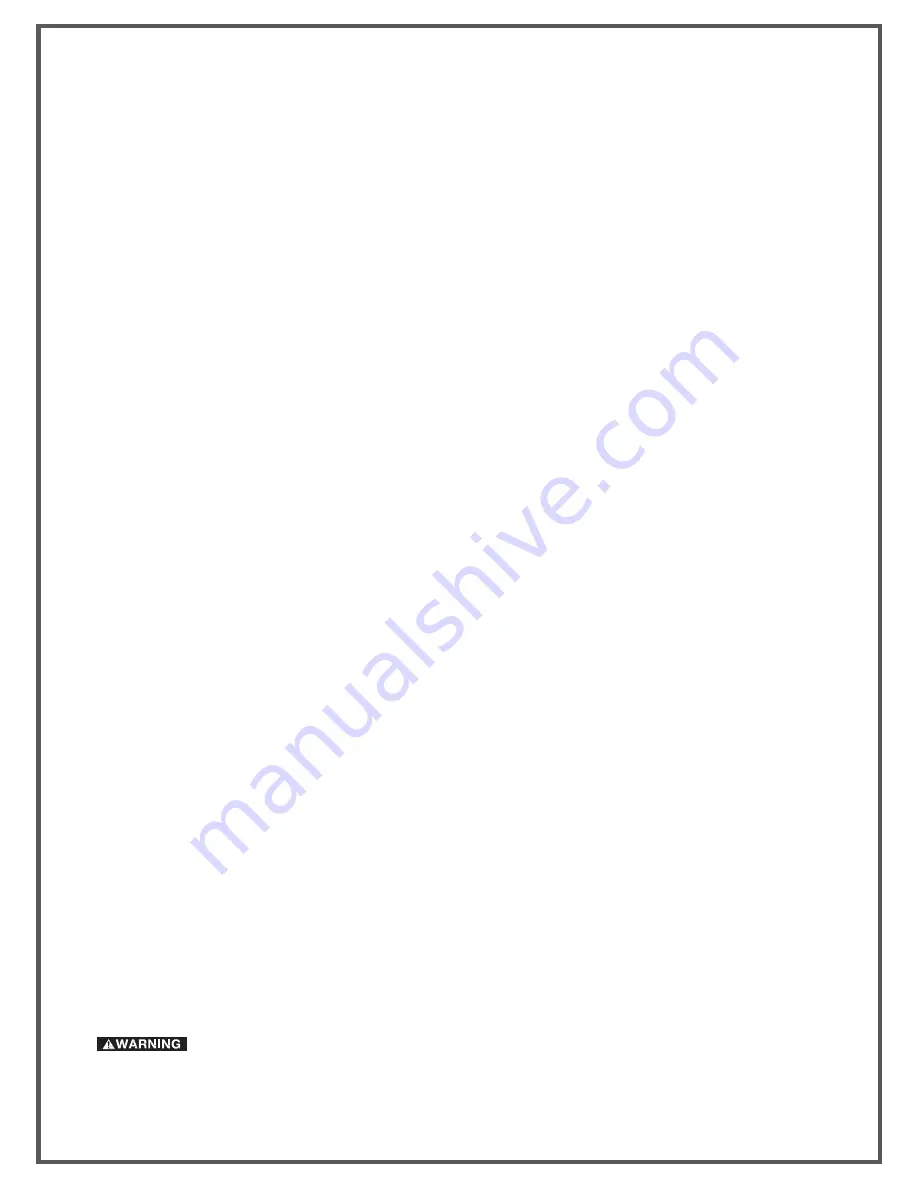
6
power and overheating. See the Extension
Cord Chart for the correct size depending on
the cord length and nameplate ampere rating.
If in doubt, use the next heavier gauge. The
smaller the gauge number, the heavier the
cord.
14. DON’T OVERREACH. Loss of balance can
make you fall into a working machine, causing
injury.
15. NEVER STAND ON THE MACHINE. Injury
could occur if the tool tips.
16. NEVER LEAVE THE MACHINE RUNNING
UNATTENDED.
TURN THE POWER OFF. Don’t leave the
machine until it comes to a complete stop. A
child or visitor could be injured.
17. TURN THE MACHINE “OFF”, AND
DISCONNECT THE MACHINE FROM THE
POWER SOURCE before installing or
removing accessories, changing cutters,
adjusting or changing set-ups. When making
repairs, be sure to lock the start switch in the
“OFF” position. An accidental start-up can
cause injury.
18. MAKE YOUR WORKSHOP
CHILDPROOF WITH PADLOCKS, MASTER
SWITCHES, OR BY REMOVING STARTER KEYS.
The accidental start-up of a machine by a child
or visitor could cause injury.
19. STAY ALERT, WATCH WHAT YOU ARE
DOING, AND USE COMMON SENSE. DO NOT
USE THE MACHINE WHEN YOU ARE TIRED OR
UNDER THE INFLUENCE OF DRUGS, ALCOHOL,
OR MEDICATION. A moment of inattention
while operating power tools may result in
injury.
20.
USE OF THIS TOOL CAN
GENERATE AND DISBURSE DUST OR OTHER
AIRBORNE PARTICLES, INCLUDING WOOD
DUST, CRYSTALLINE SILICA DUST AND
ASBESTOS DUST. Direct particles away from
face and body. Always operate tool in well
ventilated area and provide for proper dust
removal. Exposure to the dust may cause
serious and permanent respiratory or other
injury, including silicosis (a serious lung
disease), cancer, and death. Avoid breathing
the dust, and avoid prolonged contact with
dust. Allowing dust to get into your mouth or
eyes, or lay on your skin may promote
absorption of harmful material. Always use
properly fitting NIOSH/OSHA approved
respiratory protection appropriate for the
dust exposure, and wash exposed areas with
soap and water.


